Table of Contents
Top Rated items in this list as voted by talkKs Readers
- Belarus and Russia : 3 votes
- Moldova and Romania : 2 votes
- United Turkish States : 2 votes
You might find the concept of a political union of countries or states strange, but unification is not a new concept in the history of the world. Did you know that powerful countries like the United Kingdom and Germany emerged as a result of unification? The United Kingdom is made up of England, Northern Island, Scotland, and Wales. The modern Germany we all know today also formed as a result of a long-term unification. The final step in this unification took place in 1990 as the Federal Republic of Germany (FDR or West Germany) merged with the German Democratic Republic (GDR or East Germany). Even the all-powerful United States formed as a result of a union of states a few centuries ago. The unification of Tanganyika and Zanzibar to form Tanzania is another example of a successful union in recent history.
Generally, countries that unite together to form unions or alliances have some similarities in common. Most of these countries are neighbors or share close geographical proximity. They may also share a common language, culture, or ethnicity, which simplifies the integration of two countries. There are several benefits to such country unifications. Through these alliances, countries can share technology, resources, and labor force, which would result in economic stability and growth. Such unions can also uplift disadvantaged communities and battle global issues like climate crisis and energy crisis. Together, the new union can stand powerful against other countries in the region.
However, the merging of countries does not always end in peace and prosperity. There is always the chance of one country, usually the more powerful country in the union, dominating and exploiting the other. The citizens of these countries also fear losing their unique identity and might find it difficult to get along with the citizens of the other country/countries, creating all sorts of issues. Sometimes, the union might exist for a few years, and then countries might break apart, reverting back to their original states. In fact, the number of unsuccessful country unions far exceeds the number of successful unions in world history. Some examples of such short-lived unions include the merger of the Republic of Egypt and the Syrian Republic to form the United Arab Republic (in 1958), the merger of the Kingdom of Iraq and the Hashemite Kingdom of Jordan to form the Arab Federation (in 1958), and the merger of Democratic Republic of Georgia, Democratic Republic of Armenia, and the Azerbaijan Democratic Republic to form Transcaucasian Democratic Federative Republic (in 1918). There are also some proposed unions that involved a lot of planning and discussions but were canceled due to various political and practical issues.
In this article, we will look at some proposed unions that might happen in the future. Most of these unions involve neighboring countries or countries that share a common culture and language, which makes unification more feasible. These unifications will also make these countries more powerful and economically stronger. Some of these unifications are already under discussion, and much planning has been carried out to make them a success. What do you think of these proposed unions? Will they become successful unions or just remain as interesting theories? Share your thoughts using Up/Down vote buttons and comment section under each list item.
-
1 Belarus and Russia

Another possible union is the unification of Belarus with Russia. While Belarus currently remains an isolated country in Eastern Europe, it shares a border with Russia, and its diplomatic stance is closely connected with Russia’s. Belarus also seems to follow Russia’s foreign policy very closely, establishing strong economic, military, and political connections with the Russian Federation. The Russian federation already has some semi-autonomous republics within it, so Belarus could be the next one to join.
“Belarus Russia Locator” By Russavia (CC BY-SA 2.5) via Commons Wikimedia
-
2 United Turkish States

Turkic states are those countries that historically share a Turkish culture and heritage. They are Azerbaijan, Kazakhstan, Kyrgyzstan, Turkey, Uzbekistan, and Turkmenistan, essentially the -Stan countries in Central Asia plus Azerbaijan and Turkey. They’re all already a part of the Turkic council or the organization of Turkish states, which is an intergovernmental organization whose objective is promoting cooperation among states that speak Turkish languages and share that heritage. So far, it’s an inter-governmental organization whose members are fully sovereign countries, but in 2021, General Secretary Baghdad Amrayev announced that the Turkic council seeks a united state overseeing the Turkic world. The general idea is to create the United Turkish States, a union of somewhat sovereign states, a union sharing a common diplomatic representation and a number of common policy guidelines.
Although this makes sense for the Central Asian countries, it would be odd for Turkey and Azerbaijan to join, given that they are territorially disconnected. Turkey has so much of its own identity due to its own individual history and heritage, and it would be sad to see it somewhat disappear to become just a member state of something that is a part of its culture.
“Flag of the Organization of Turkic States” By Organization of Turkic States - (Public Domain) via Commons Wikimedia
-
3 Moldova and Romania

What if Moldova joined Romania? The unification of these two Easter European countries has been a popular concept since the 1980s. In 1917, the Bessarabia governance of the Russian empire declared independence as the Moldovan republic and united with the Kingdom of Romania in 1918. This was before the soviet occupation in 1940. After Moldova gained independence following the dissolution of the Soviet Union, it remained an independent country. Today some people argue that the countries should reunite as they did in 1918.
An example of their cultural similarity is their almost identical flag. One poll from march 2021 stated that 43.9% of Moldova would vote to reunite with Romania; now, the value might be even higher because Moldova seems more and more eager to establish further connections with the west and the European Union of which Romania is a member of.
“Potential union of Romania and Moldova including Transnistria” By User:Scooter20 - Own work (Public Domain) via Commons Wikimedia
-
4 A United Korea

Korean reunification has been a goal for both South Korea and North Korea since the 1953 armistice agreement. Before World War I and Japan’s annexation of Korea, both South Korea and North Korea were parts of just one single country. For centuries, it was known as the Goryeo and Joseon dynasties. Therefore, these two countries are neighbors that share the same language and similar cultures. But at present, they have completely different political systems and lifestyles.
When it comes to modern unification concepts, proposed strategies vary between the two Koreas. Both countries want unification under one system while abandoning the other. The north wants to rule the south, and the south wants to rule the north. The fact they both have completely opposite systems makes a compromise difficult. In a recent edition of the Winter Olympics, both countries’ athletes competed together under the same banner, and negotiations between the two continued to happen, but it’s unlikely that a real unification will happen in the short-term future.
“Unification flag of Korea (pre 2009)” By Pk0001 - derived from Unification flag of Korea (pre 2009).png (CC BY-SA 4.0) via Commons Wikimedia
-
5 East African Federation

This is a proposed political union between the seven member states of the East African community. The member states of this potential new country would be Burundi, Kenya, Rwanda, Tanzania, and Uganda. Recently, South Sudan and the Democratic Republic of the Congo also expressed an interest in this union. The union makes sense and has great potential for the first five countries, but south Sudan is a problematic territory with border disputes and recent independence from the north. It might add unnecessary trouble to this new nation. The democratic republic of the Congo might be a good addition, especially because it would unite both African coasts, something that has never been done since the British Empire. The Portuguese attempted to unite Angola and Mozambique, but the British refused it. The idea of this federation has existed since the early 1960s. In 2022, the institutions needed for its functioning are already in place, and representatives from all related nations have been working together toward the goal of unification.
“EAF - no borders (orthographic projection)” By M.Bitton - Own work (CC BY-SA 4.0) via Commons Wikimedia
-
6 Saint Martin/ Sint Maarten

Saint Martin is another possible union of two European overseas territories into a new country of its own. Saint martin or Saint Marten is a small island in the Caribbean divided today between the Netherlands and France, remnants of each of their colonial empires, and the division itself goes back to 1648. Today a movement exists to unite the island into one single sovereign country. They even have a proposed flag already. The 1648 treaty of Concordia allowed freedom of movement between both parts of the island. This promoted a common sentiment among the island’s inhabitants, similar to what we see in the republic of Ireland and Northern Ireland. However, some see formal unification as unnecessary. It’s also interesting to note that a lot of people that support reunification don’t necessarily want independence; they just want the unification of the two areas, which doesn’t make much sense. The question remains: would just France or the Netherlands have control over it completely, or would both continue to co-rule the territory?
“Saint Martin map” By Hogweard - Saint-Martin Island map-en.svg (CC BY-SA 3.0) via Commons Wikimedia
-
7 Central America

In Central America, one political leader has rekindled the idea of a Federal Republic of Central America. The president of El Salvador, Nayib Bukele, has put forth calls for pursuing a deeper regional integration, eventually resulting in a modern Central American unified nation. This would include Costa Rica, El Salvador, Guatemala, Honduras, Nicaragua, Belize, and Panama. The idea would be a remake of the Federal Republic of Central America, which existed between 1823 and 1841, although at the time, it didn’t include Belize or Panama. The countries do have some cultural similarities, but they also display a lot of differences. Perhaps a federal state with a large degree of autonomy for each member would be a way to increase economic development in these regions.
“United Provinces of Central America (orthographic projection)” By Heraldry - CentralAmerica1860Map.jpg - created with the Generic Mapping Tools (CC BY-SA 3.0) via Commons Wikimedia
-
8 Canada and Turks and Caicos Islands

This is about the proposed union of Canada with the Turks and Caicos islands in the Caribbean. The proposed Canadian annexation of the Turks and Caicos islands has been an ongoing political discussion between the two nations since a Canadian prime minister (Robert Borden) first proposed the idea at the beginning of the twentieth century. Both Canada and the islands operate under a Westminster system of government and share King Charles III as their head of state, but while Canada is independent, the islands are currently a British overseas territory under the direct sovereignty of the united kingdom. The process would essentially replace the UK with Canada, but the UK has been granting increasing rights to the islands, and interest on Canada’s behalf has been apparently diminishing as well.
It’s unclear how the people of Turks and Caicos would feel about this unification. It was first proposed by Canada to the UK in 1917 and then resurged as an issue in the 1970s, but it was always Canada wanting the islands and the UK refusing.
“Canada and Turks and Caicos Islands” By Lord of the East - Own work (CC BY-SA 4.0) via Commons Wikimedia
-
9 Union of Kosovo and Albania

Since Kosovo’s independence from Serbia in 2008, there have been several discussions between Albania and Kosovo to unite into a greater Albania due to Kosovo’s majority ethnic Albanian population. However, this unification doesn’t seem to be really taken seriously by either government. Despite Serbian opposition, Kosovo is a de facto independent state, and since they are ethnically Albanian and get along well, a union could be the way forward. But this unification would anger the Serbians even more, and we all know how much of a powder keg the Balkans are, especially in the Serbia-Bosnia area.
The union would, however, play into the fulfillment of the concept of a greater Albania, an irredentist and nationalist concept that seeks to unify the lands Albanians claim as their natural homeland. They base the claims on the present-day or historical presence of Albanian populations in those areas. The most radical position states that in addition to Albania proper, they should include Kosovo, some valley in Serbia, territories in Montenegro, Greece, and even north Macedonia. If the union with Kosovo led to these further desired territorial extensions, it would pose a big problem. But it’s not clear whether Albania even wants this to happen. Most Albanian politicians are more interested in joining the European Union and NATO than in national unification. However, the people in the two countries seem to share an interest in the union. In a public poll carried out in 2019, 82.9% of Albanians and 79.4% of Kosovar Albanian showed an interest in the unification.
“Albania Kosovo Locator” By Turkish Flame - Own work (Public Domain) via Commons Wikimedia


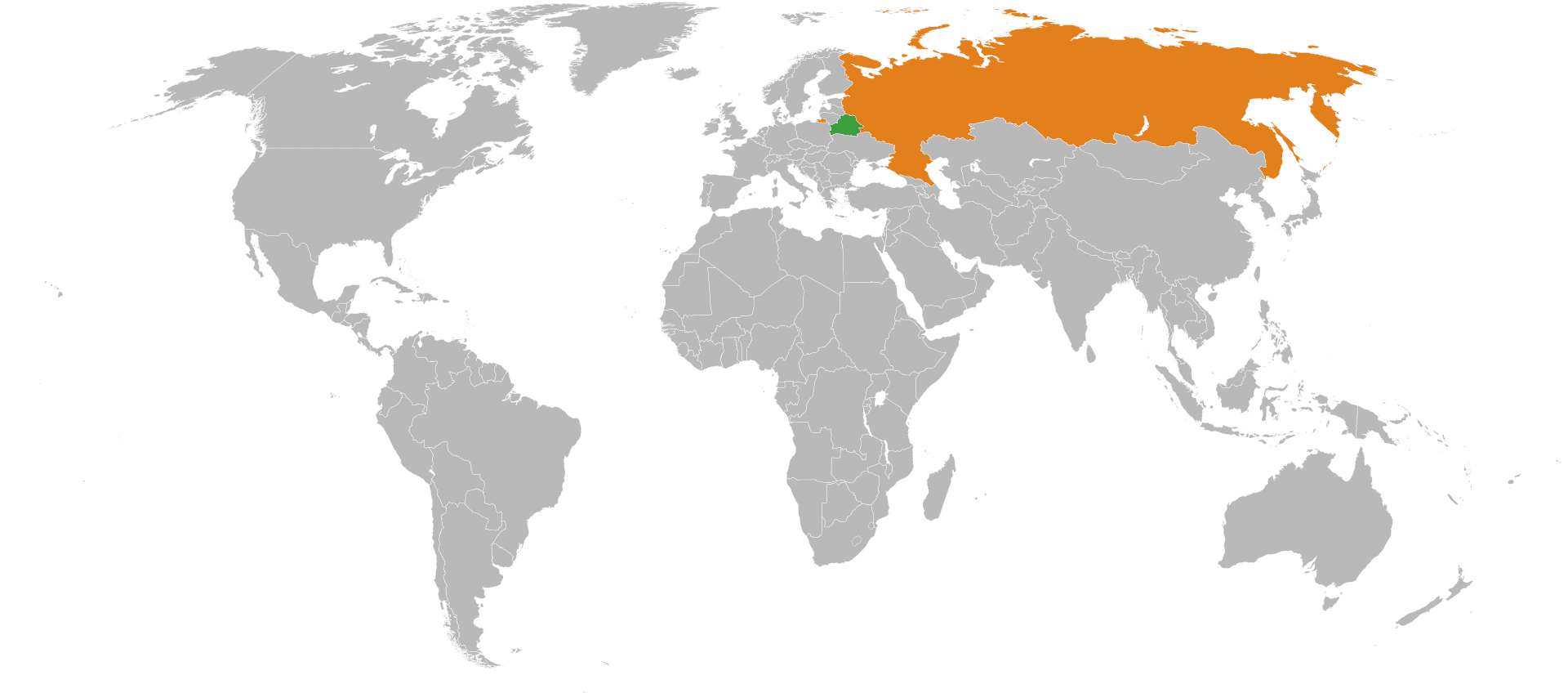

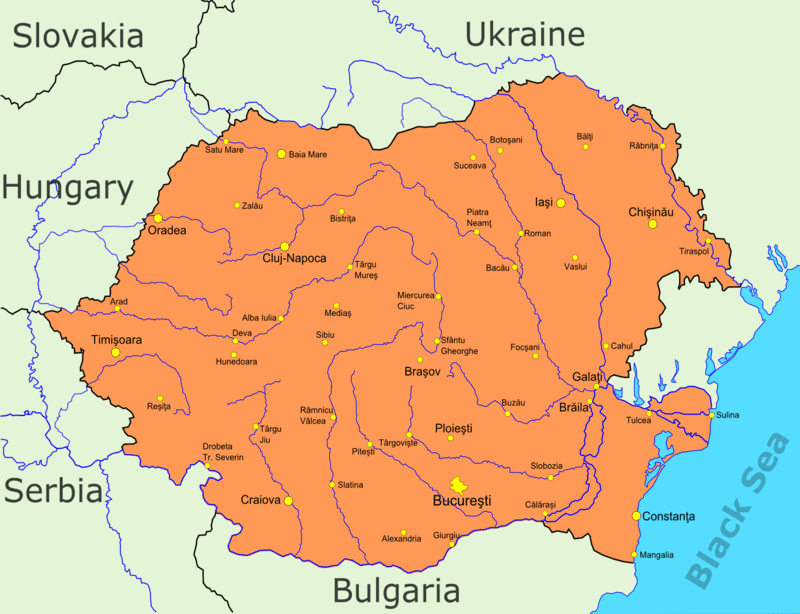



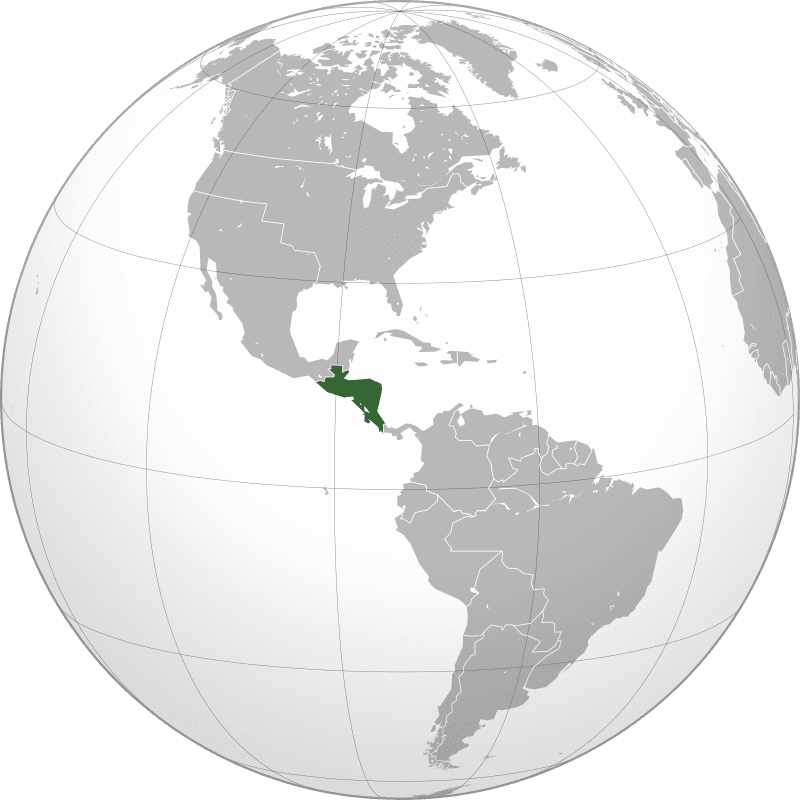
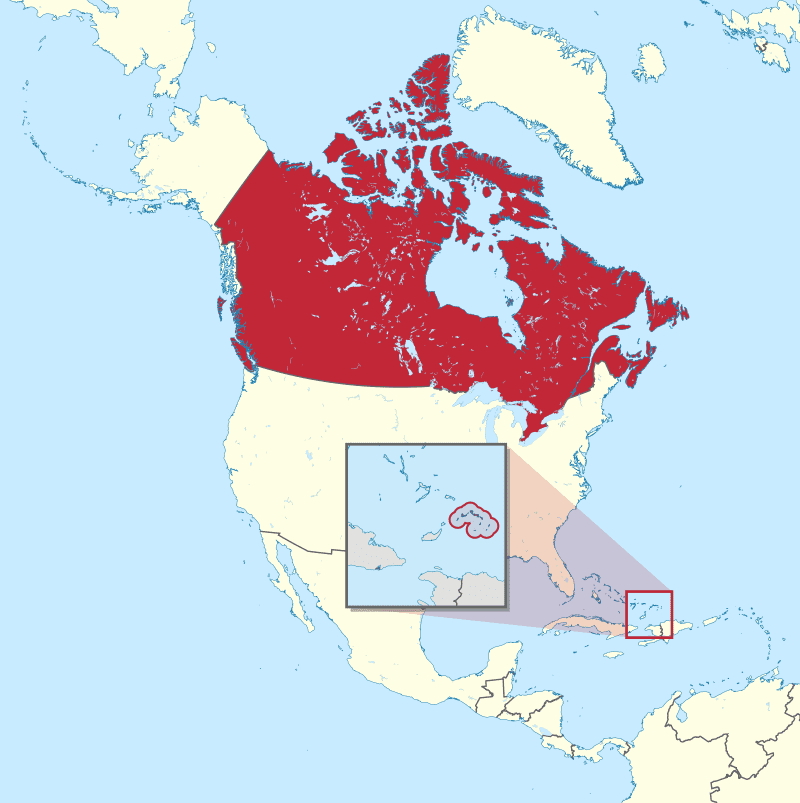
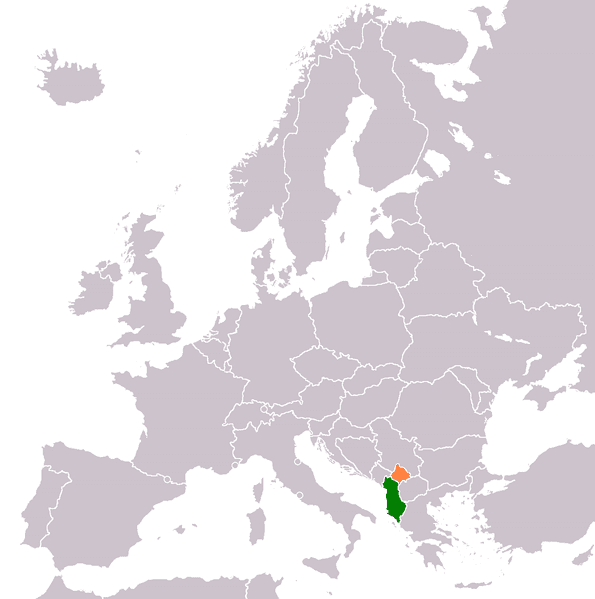





Comments 0